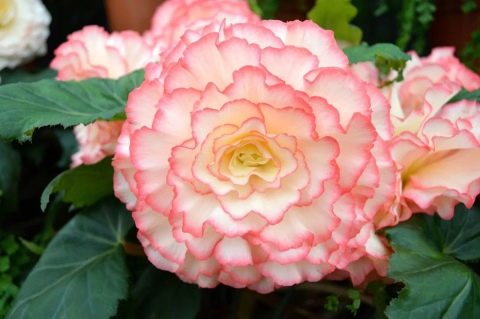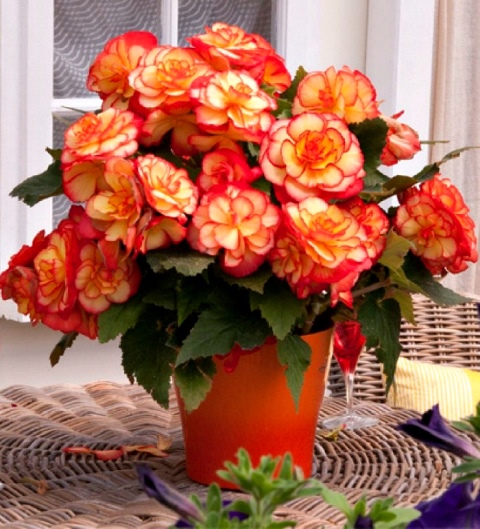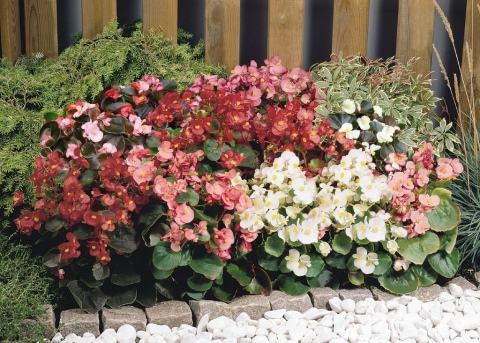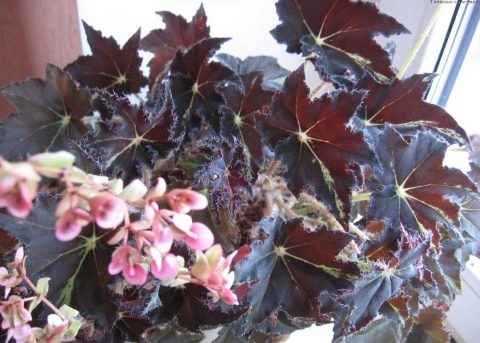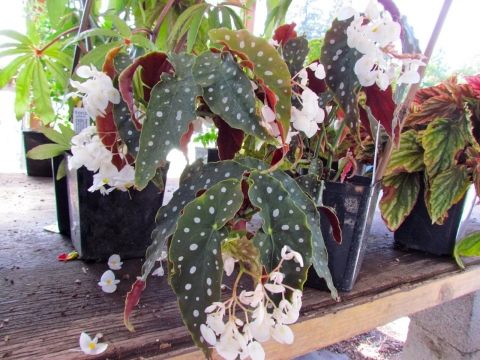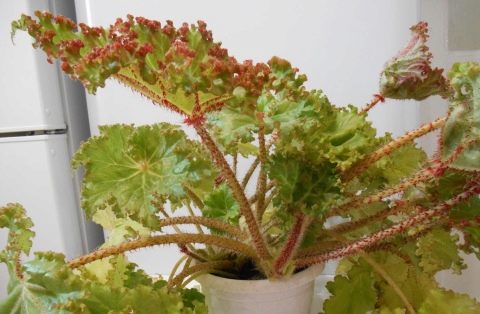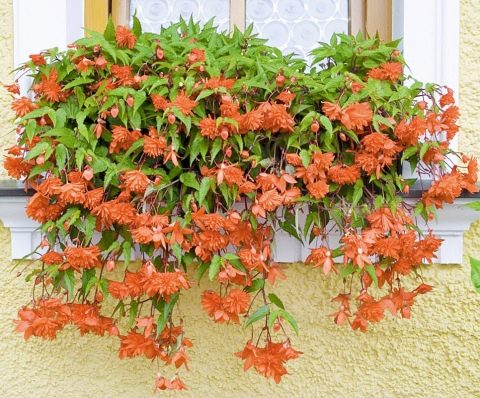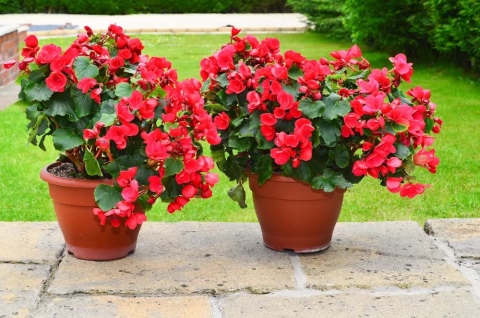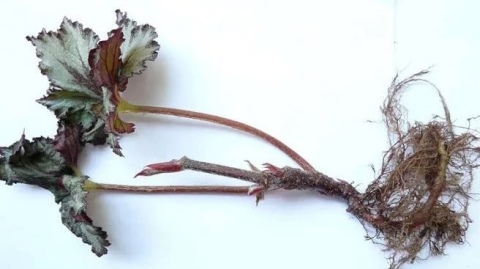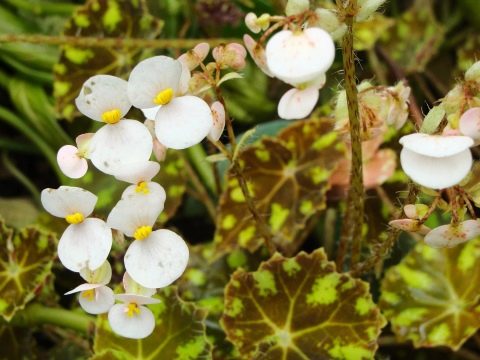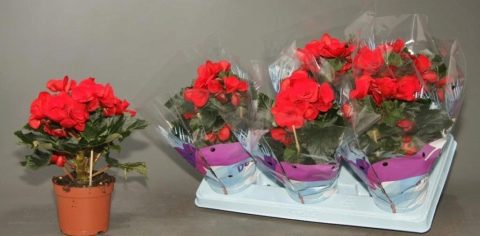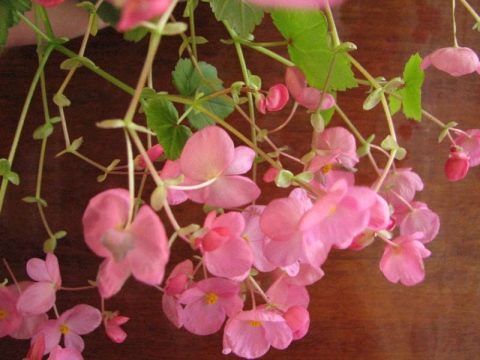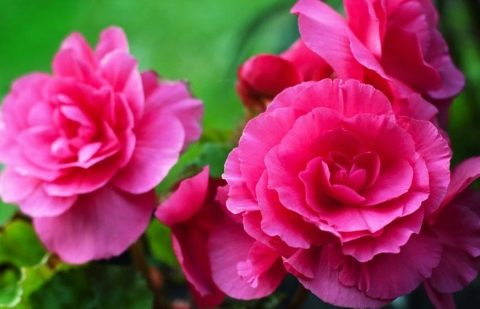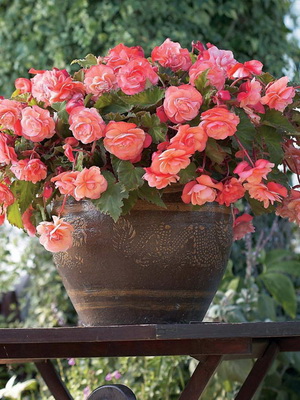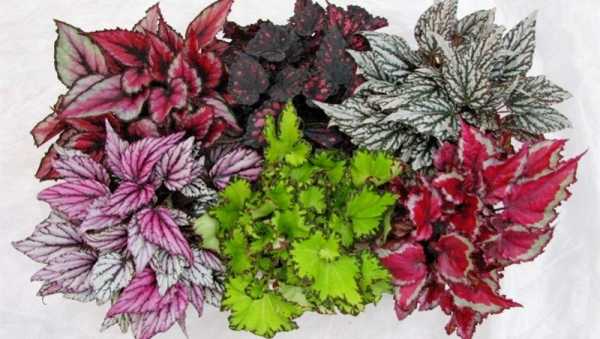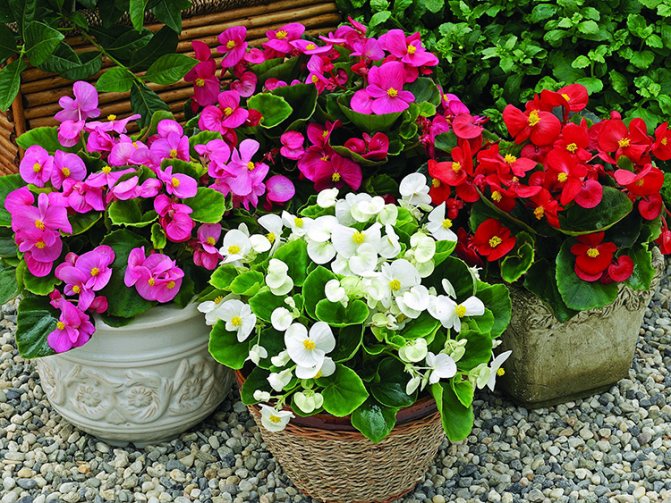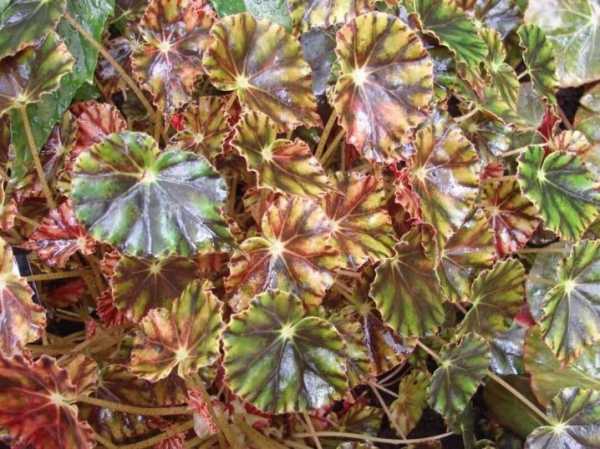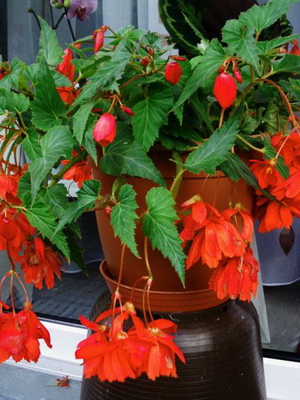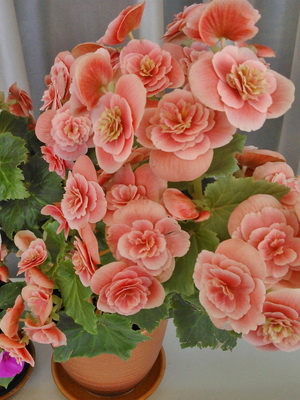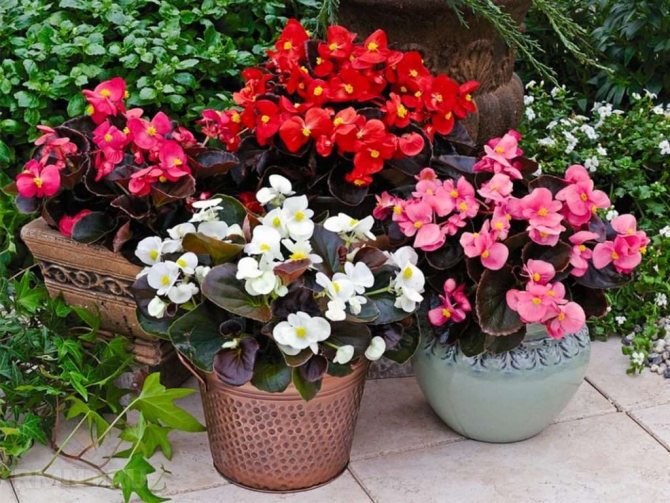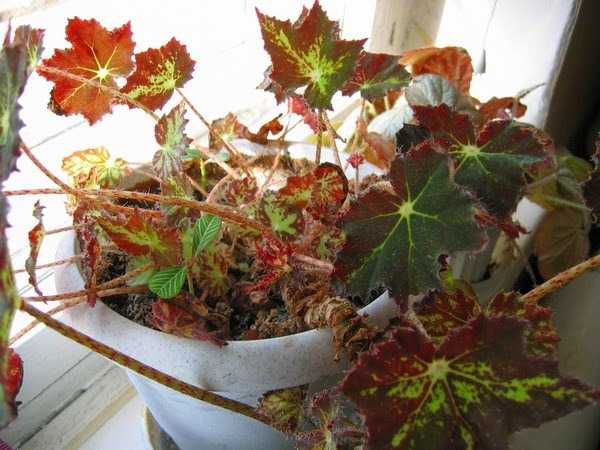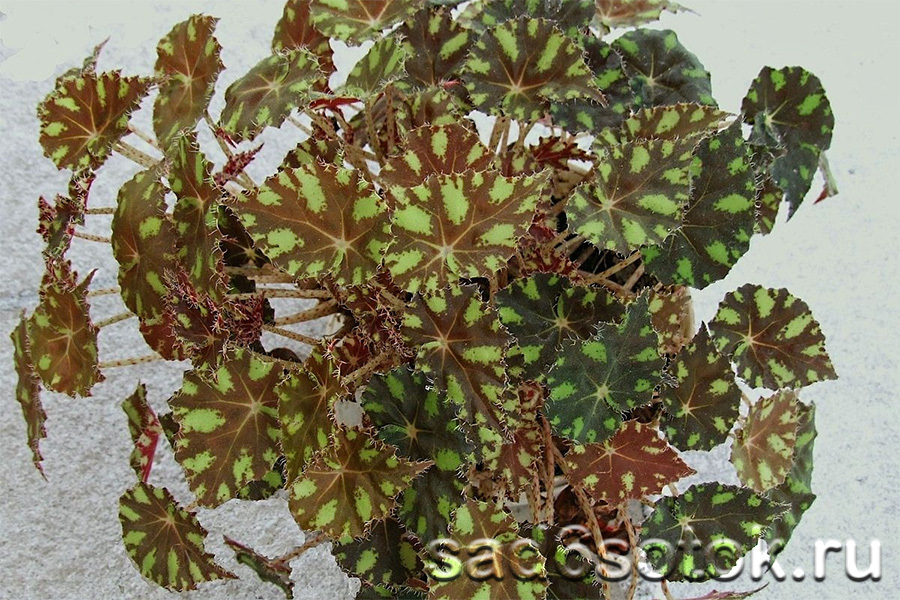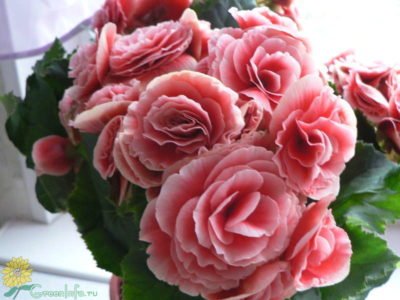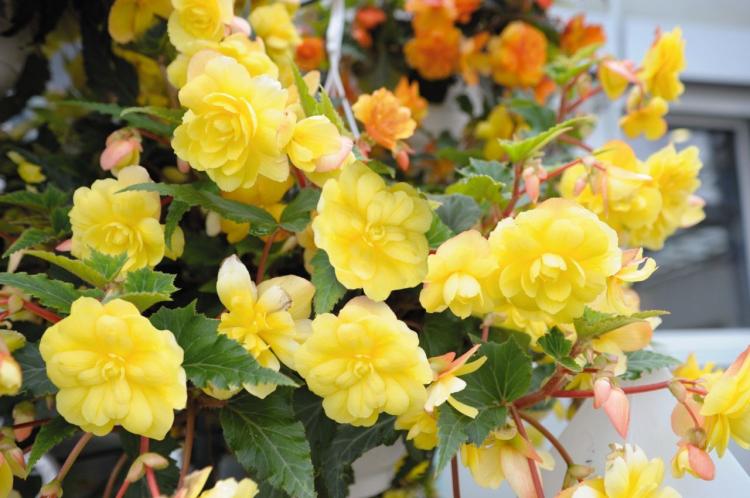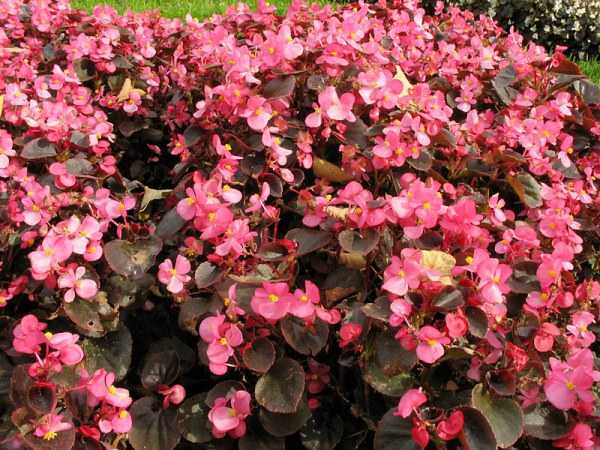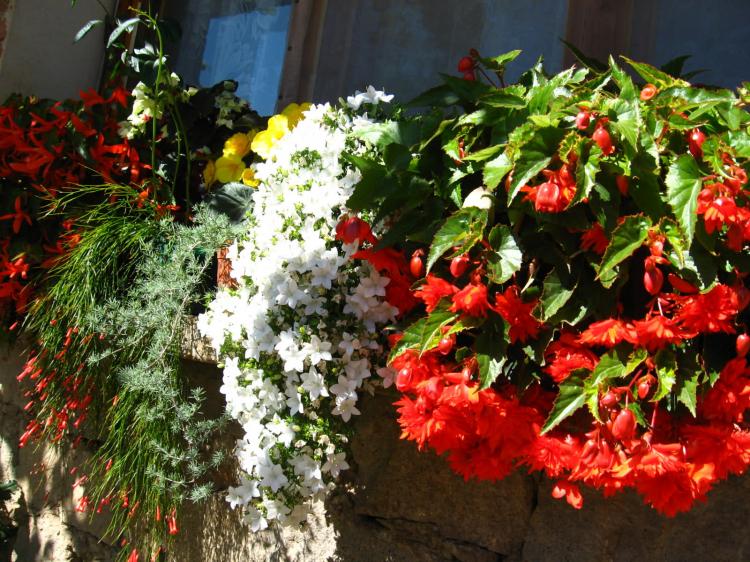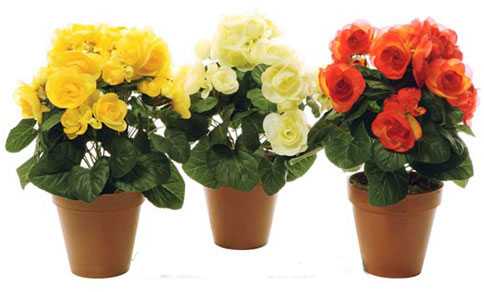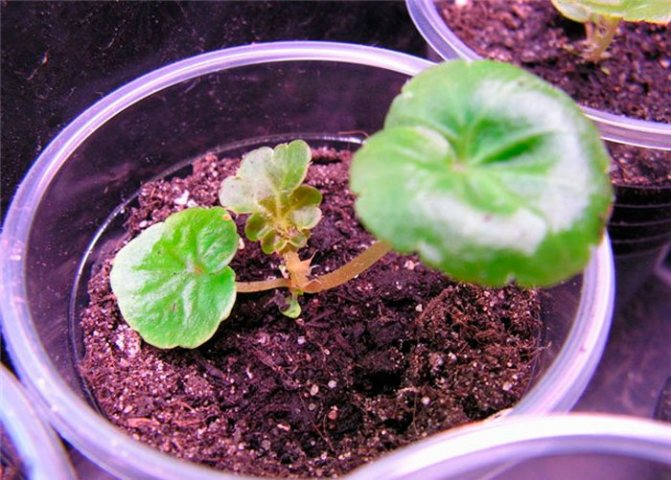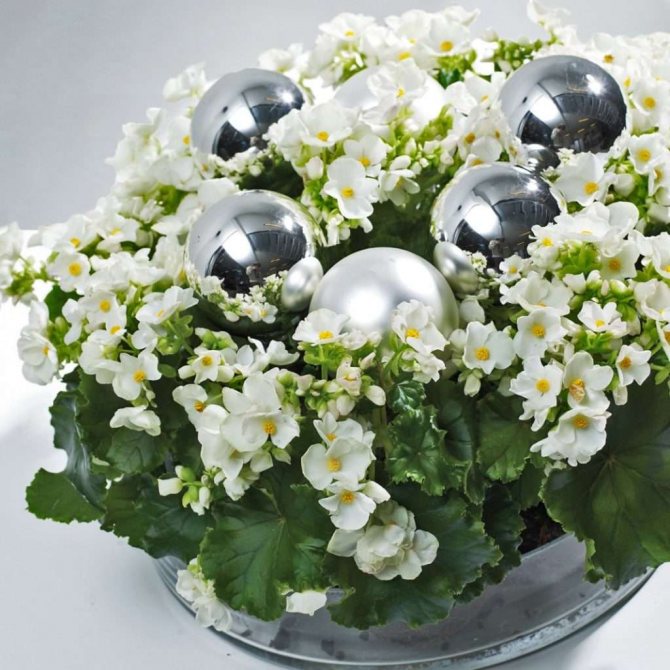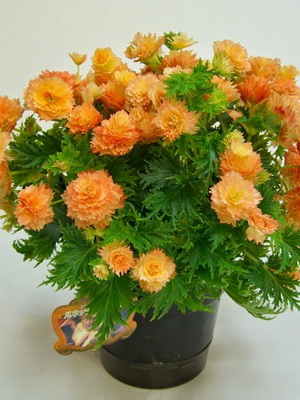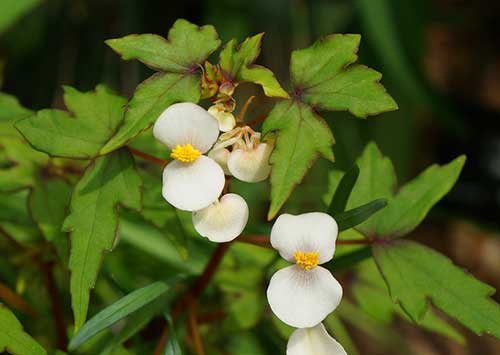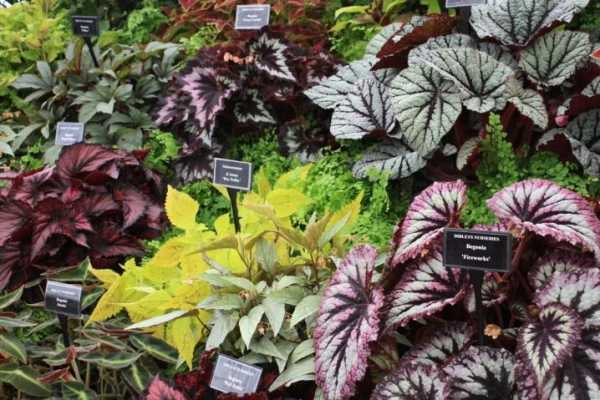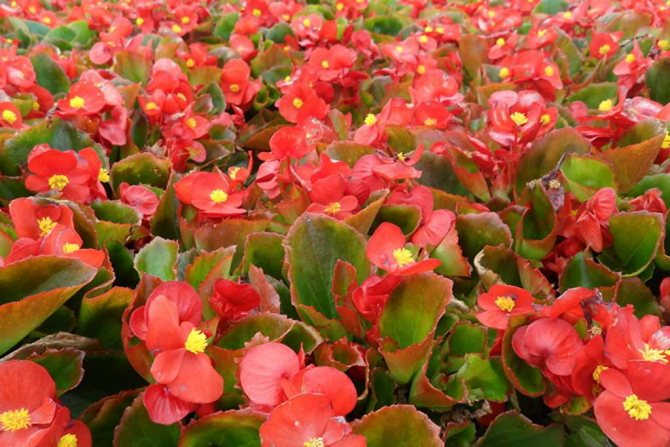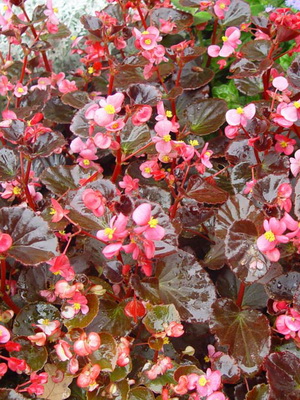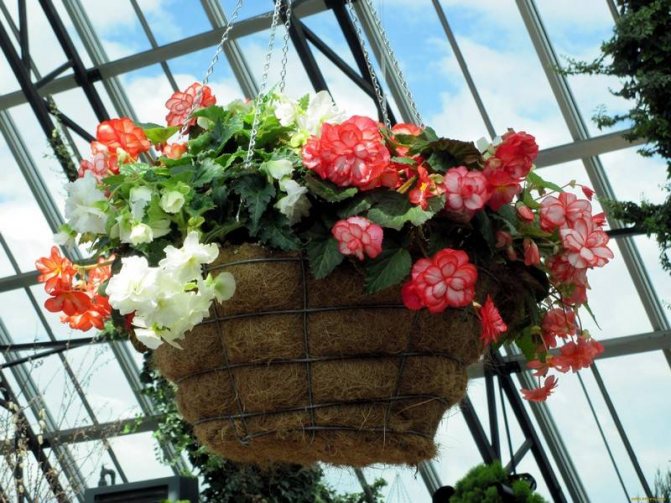Types of decorative leafy begonias with photos and descriptions
Begonia has a rather complex classification system, dividing plant species and varieties into different groups. Someone divides them according to the method of application in floriculture, someone according to the type of root system or the method of reproduction. We decided to do it easier, and conditionally divide begonias into decorative leafy and decorative flowering.
Flowering begonias.
It is believed that the "evolution" of decorative flowering begonias is significantly inferior to decorative deciduous varieties. If in flowering indoor begonias they mainly change only color variations and improve endurance, then in the process of creating all new varieties of deciduous beauties, breeders have long surpassed, it would seem, any expectations. Different textures, effects, colors, pattern variations are complemented by the ability to choose the size and shape of the leaves. And sometimes it seems that new varieties appear day after day.
On a note! Begonias can be selected not just according to your taste, but also for the interior, textiles and even accessories. And although the old varieties are still in demand, it was fashionable innovations that brought begonias back to their peak of popularity.
Among decorative flowering begonias, hybrid varieties of tuberous begonias (Begonia x tuberhybrida) can boast the greatest variability. Among them, you can sometimes find the most unexpected color variations. But in deciduous begonias, hybrids of begonia rex (Begonia rex) dominate, which often appear in catalogs and at exhibitions as varieties of unknown origin, in which purely decorative characteristics are considered the main ones.
And those, and other begonias have something to see. In this article, we will introduce you to the most beautiful types of decorative leafy begonias, leading in popularity ratings. They are prized for the unusual shape, texture and color of their leaves.
Growing room begonia: how to care for a flower
For winter-flowering species, the optimum temperature is 13–21 ° C. High humidity for begonias is beneficial, but not particularly important.
The plant is light-requiring, but protect it from direct sunlight. In winter, try to provide as much light as possible.
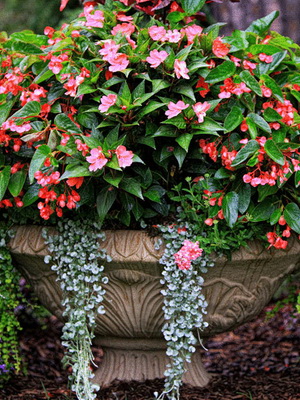
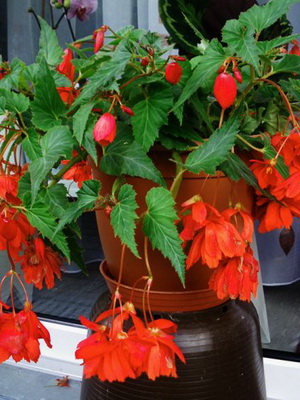
One of the important conditions for growing begonias is abundant watering during the flowering period, the rest of the time it is watered as needed. Watering should be gradually reduced for species that have a dormant period as soon as the leaves begin to turn yellow. Begonias are susceptible to both underwatering and overwatering.
During budding and flowering, feeding with a weak fertilizer is required.
When growing and caring for begonias in rooms, it should be borne in mind that they do not like direct sunlight. They require high air humidity, sudden temperature changes and drafts are contraindicated. In summer, plants are recommended to be placed on a pallet with pebbles filled with water. Most of the species do not have dormant periods, they grow all year round with some slowdown in the autumn-winter period. The optimum temperature in summer is -21-25 ° C and in winter 15-18 ° C. If it is not possible to lower the temperature in winter, additional lighting must be provided. The substrate of begonia should consist of sod and leafy soil, humus, peat and sand (2: 1: 1: 1: 1). You can use the special Begonia substrate sold in stores.
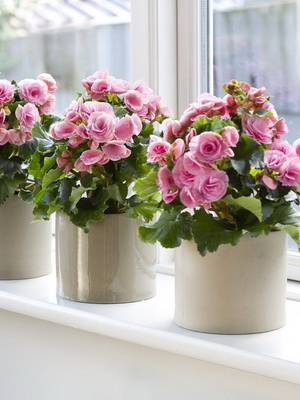

It is best to keep begonias on windowsills; some species feel especially good at northern exposure windows. During the growing season, in summer, abundant watering is required, in winter - moderate. The plant is fed twice a month, in winter - once every 1.5-2 months with flower fertilizer.It should be remembered that it is better to underfeed the plant than overfeed. The transplant is carried out annually in the spring.
Difficulties in breeding begonias include the possibility of being affected by gray mold (in this case, brown spots appear on the leaves, which are then covered with a gray bloom) or powdery mildew (white powdery coating on the leaves).

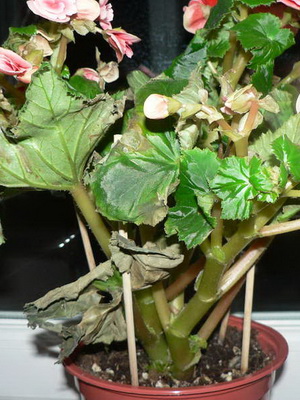
Yellowing leaves or dropping of buds indicate a lack of light or a lack or excess of moisture in the soil, thin and poorly leafy stems - about a lack of light, dry and twisted leaves - about too high an air temperature. The reason for the appearance of leaves with brown tips is too low air humidity.
Plants are sometimes attacked by spider mites. This usually means that the indoor air is dry.
The death of a plant can occur for various reasons: rotting of the roots due to waterlogging of the soil, damage by nematodes (note if there are bulges on the roots) or by a weevil (see if the tubers are not eaten)
Begonia Gloire de Lorrain nursing reproduction. Possible growing difficulties
- From direct sun on the leaves, burns may appear in the form of brown or copper-colored spots.
- Dry leaf edges arise from too dry air.
- Water contact with leaves can cause fungal diseases.
- Overdrying the soil, especially in hot weather, can contribute to powdery mildew.
- Excess fertilizer causes the leaves to curl and change color.
- Overmoistening, especially in combination with hypothermia, causes wilting and death of the plant. Rotting of the base of the stem is often observed.
- Lack of light causes stretching of shoots, lack of flowering, yellowing of leaves.
- Avoid direct cold drafts, and do not place the plant near a heater, air conditioner, or humidifier.
Galya, your begonia is a miracle!
I saw her last year in your topic and really wanted such beauty for myself. And only recently, I got rooted cuttings of this begonia. What I am incredibly happy about.
The begonias of the Lorrain group Begonia x Lorrain (Begonia hybrida Gloire de Lorraine) are a group of hybrids.
Begonia Gloire de Lorraine (V. Gloire de Lorraine), Glory of Lorraine, winter flowering hybrid of V. socotrana with V. Dregei. In Western countries, it is also called Christmas Begonia. It competes with the Christmas flower - poinsettia.
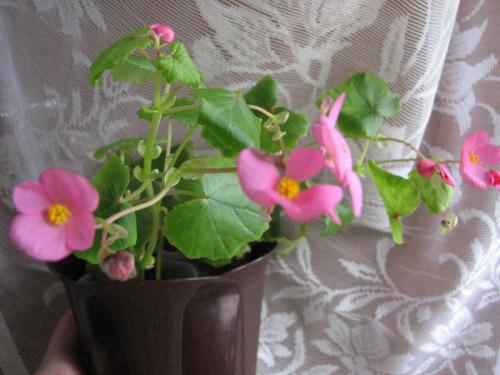
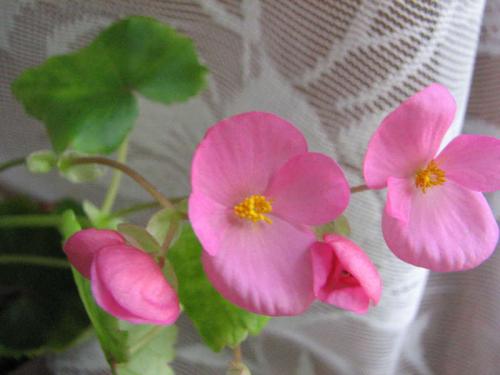
Not much information, but I found something .————————————————— “Propagated by stem and leaf cuttings. Uterine specimens prepared for grafting at a temperature of 15-17 ° C, already in February-March grow and give good shoots at the base of the bush from the lower buds or from the ground. Apical shoots are not taken on cuttings, since they do not give good growth and tend to bloom prematurely. The cuttings are planted in an exploration box in a mixture of peat and river sand. Since rooting is easier in the stale air, boxes with cuttings are covered with glass.
The temperature is maintained at about 22-25 ° С
Water should be done carefully.
After rooting, young plants are planted in 4-centimeter (1 vert.) Pots, which are placed in a warm greenhouse or on the shelves of an exploration greenhouse.
Plants are selected for mother plants in the fall. They are not allowed to bloom, for which the shoots are cut to 1 / 3-1 / 2 of their length. Throughout the winter, flowering shoots are destroyed in order to induce strong growth.
The best time for propagation by leafy cuttings is August. Well-ripened leaves with a heel go to the cuttings. The leaves are planted with the end of the petiole in an exploration bed at a very shallow depth. The temperature is maintained at 22-25 ° C. Rooting occurs in 3-4 decades. When young roots appear at the base of the cutting, the plants are transplanted.
The advantage of such propagation is that it produces plants that are more highly developed and less prone to flowering at a young age than plants derived from stem cuttings.At first, the land is given in a mixture of peat, leaf and sand, and later - from leaf, light turf and sand. On sunny days, plants need shading and spraying.
In the culture there are many new varieties and varieties of the begonias of Gloire de Lorrain, characterized by fast, strong, straight growth, large, juicy green leaves, luxurious, large, showy flowers. There are ampelous forms.
Popular varieties and hybrids of royal begonia
Begonia "Mini Merry Christmas". This hybrid was bred in 1978. This is the most variegated variety of royal begonia. The average height of the bush is 30 cm. The top of the leaves is velvety, and the lower part is cut with large veins. From the center of the sheet to the edges, the color changes. In the middle, it is brown, then turns into red-crimson and becomes greenish-white at the edge with mother-of-pearl splashes.
Begonia "Escargot" or royal snail (Escargot) is a low (up to 30 cm in height) and wide (up to 45 cm in width) decorative bush with large rounded leaves. It is distinguished by a two-tone color of the leaves: the central part and the edges of the leaf plates are painted in brown-olive colors, and between them there is a wide strip of silver color. The leaf surface is matte, it is covered with the smallest burgundy villi. At the base, the leaves are also twisted in a double helix.
Begonia "Cartagena" (Cartagena). It has oval leaf plates of dark green color, which are wrapped in a shell. The center of the leaf is dark brown, but with age it becomes plum. On the green background of the leaf plate, there are scattered silvery spots, which are sometimes highlighted with a light pink glow.
Begonia "Chocolate Cream". This variety of begonias is distinguished by a large leaf with a base, twisted into a spiral. The central part of the leaf plate is painted in a rich plum color. The veins and fringed edges are bright dark brown. Most of the leaf glows with a silvery pink tint. Beautiful!
Begonia "Silver Greenheart". It has large silvery leaves with an oblique heart-shaped shape. The edges of the leaves are decorated with a wide border of emerald green, dotted with silver spots.
Evening Glow begonia. This hybrid has medium-sized leaf plates. Their central part has a rich crimson color, from where brownish-green veins diverge. From the center, along a part of the crimson leaf, veins of a brownish-green color diverge. A crimson border runs along the edge.
Begonia "Dollar Down". The compact bush is 25-30 cm high. Its cherry-red leaves are decorated with a dark border. The shape of the leaf plate is fan-shaped, spiral-shaped, its size increases from the middle to the edges.
Begonia "Pearle de Paris". Well-branched bush. It is characterized by medium-sized leaves of a gray-silver color with dark, well-visible veins.
Begonia "Regal Minuet". An instance of this variety is a small bush with thin, papery-like leaves, which, in good lighting, become bright burgundy. In low light, the color changes noticeably and becomes silvery-pink. At the same time, the border and the center of the sheet plate are colored brown.
Begonia "Griffon" (Grifon). This strong and durable begonia bush reaches a height of 40 cm. Its leaves are large, lush, in shape resemble the open paw of a dark green griffin with a silvery pattern. They are located on long petioles.
Begonia "Lilian". has large emerald green leaves, covered with silvery peas, turning pink at the base. The border is wide, burgundy brown. The leaves are twisted at the base in a double helix.
Begonia "Black Mamba" (Dark Mamba). It differs in the way of growth of leaf blades - it is spiral. The color of the leaves is also impressive - the deep dark green appears to be completely black, while the underside of the leaves is cherry brown.
Begonia "November Frost". The bush is small. The leaves are similar to maple, at the base are twisted in a spiral. The main color of the leaf is silver, and the central part, numerous small veins and border along the edge are dark brown.
Begonia "Black Fang". This is an amazingly beautiful variety of begonia. Its leaves are twisted in a double helix. They are velvety, black-olive in color with thin lemon veins. The underside of the leaf is bright crimson. The bush is compact. Requires good lighting.
Begonia "Black Prince" (Black Prince). Dark, almost black velvety leaves with carved edges of a coarse-toothed shape, the underside of the leaf is reddish-brown.
Hallelujah begonia. This hybrid has large, spirally twisted at the petioles, purple leaves with a silvery coating. The central part and the edge of the cherry-colored leaves, and between them there is a fairly wide strip of rich green color with numerous silvery specks.
Reproduction
Begonia is propagated by vegetative methods (cuttings /leaves or dividing the tuber) and seeds.
Leaves and cuttings
One of the easiest and most popular ways to get a new plant. A stalk or leaf is separated from the mother bush with a sterile knife and placed in a solution of a root formation stimulator.
However, simple settled water is enough. The roots appear within a few days and the new plant can be planted in an individual pot.
Roots and tubers
This method is not suitable for beginners, since in order to divide the rhizome, it is necessary to determine the presence of a growth bud. But experienced florists often use the method to propagate begonias.
On a note! Varietal begonias are rarely root-divided.
Seeds
This is a very troublesome and time-consuming process. Begonia seeds are dusty and difficult to spread evenly over the surface of the substrate.
In addition, they do not have a high germination rate. But for work, breeders often use seed reproduction.

Which variety to choose
If begonia is to decorate a fence and flower beds, then the stake should be placed on tuberous perennials. Such a garden begonia is called, and the first two signs that distinguish it from other varieties are a large tuber and a height of up to 50 cm.
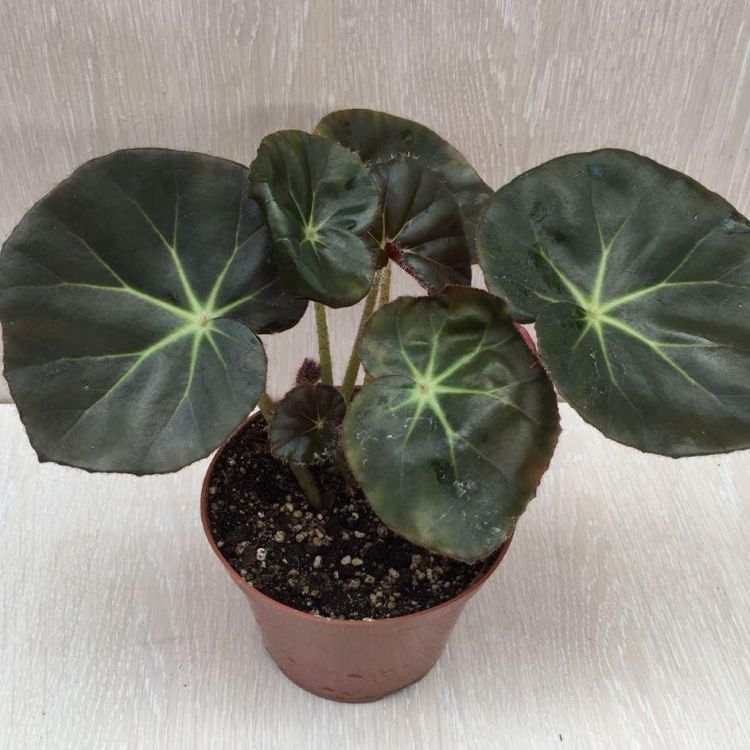
The last sign of a garden begonia can be recognized only after some hour, while the first one has a 6-8 cm diameter even before planting.

But begonia at home is distributed mainly by decorative hybrids:
- "Bouton de Rose" - flower;
- "Crispa Marginata" - floral;
- "Duck Red" - flower;
- "Gloire de Lorrain" - floral;
- "Competitor" - flower;
- "Pikoti Harlequin" - floral;
- "Rex" ("Royal") - deciduous;
- "Metallica" - deciduous;
- "Tiger" - deciduous;
- "Mason" - deciduous;
- "Cleopatra" is a deciduous one.
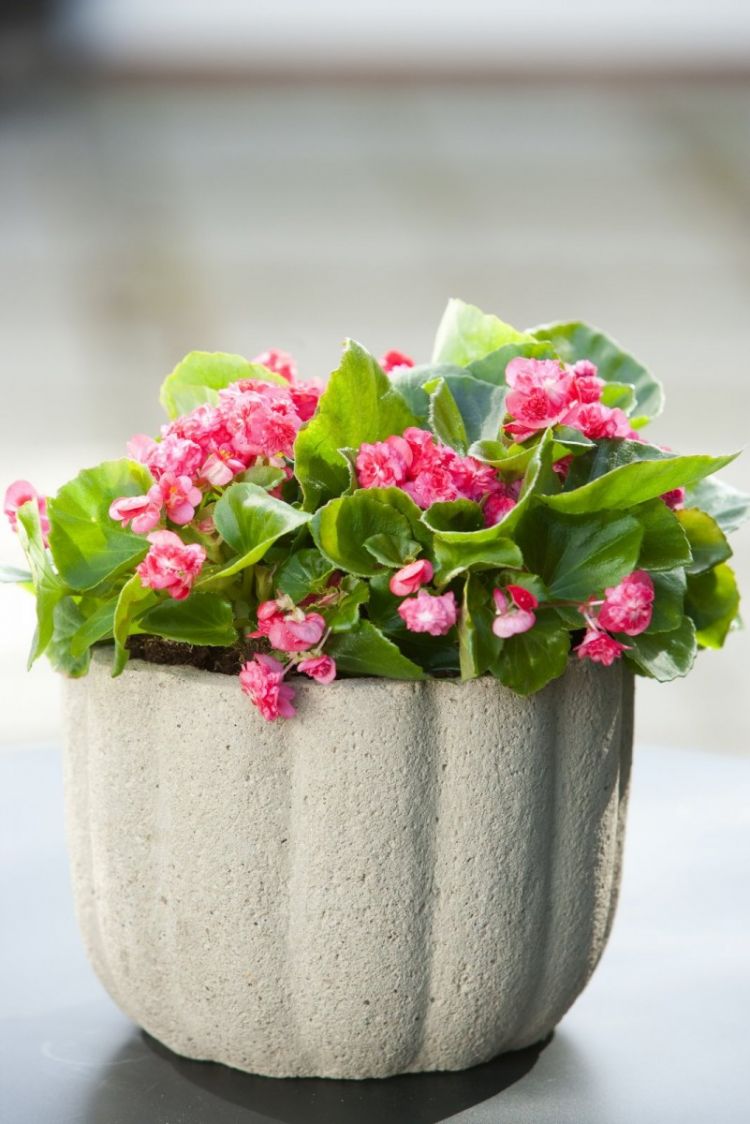
The list goes on and on. Therefore, for a complete acquaintance with the varieties of decorative hybrid begonias, it is better to visit recognized online sites for the sale of indoor and garden plants.
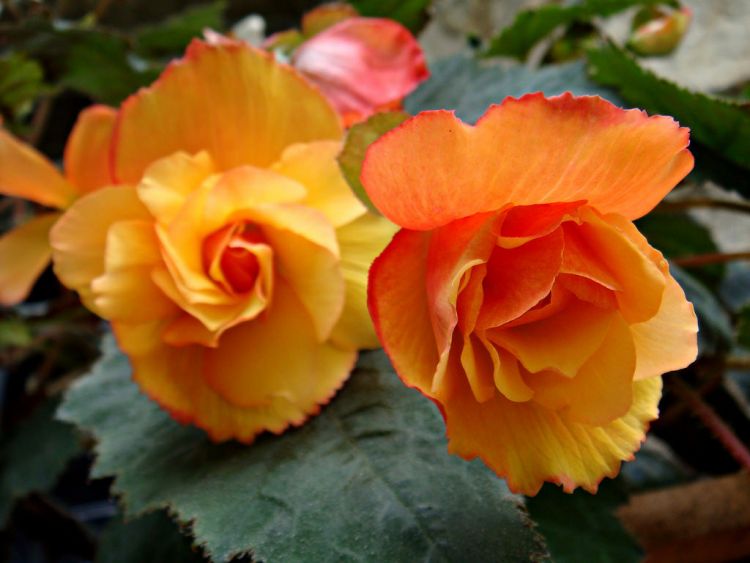
Varieties
For home cultivation, several varieties are very popular among domestic florists.
Red-leaved begonia Fista
Popular for its unpretentiousness and compact size. Rounded leaf plates are colored red-green. This variety is easy to buy at any flower shop.
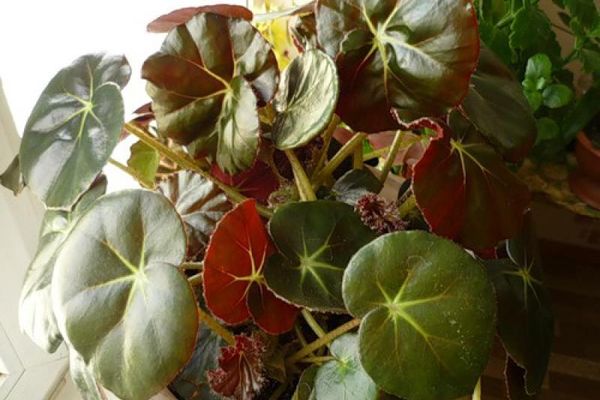
Cuff
It is famous among flower growers for its unpretentiousness. On the creeping stem, there are beautiful leaf plates of a light green hue with red veins on the inside.
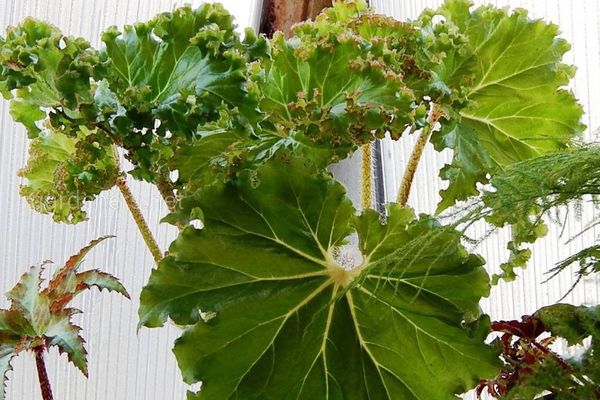
Hogweed
The variety native to Brazil is distinguished by the specific structure of the leaf plates, which most resemble the leaves of the hogweed. The stem is light pink and slightly pubescent along its entire length.

Mini merry christmas
The hybrid variety was bred by the efforts of breeders. It belongs to the variegated subspecies, it is distinguished by high decorative characteristics of the leaf plates.
The color changes from the center of the leaf, where it is burgundy with white veins, to dark green, almost black, along the edge.
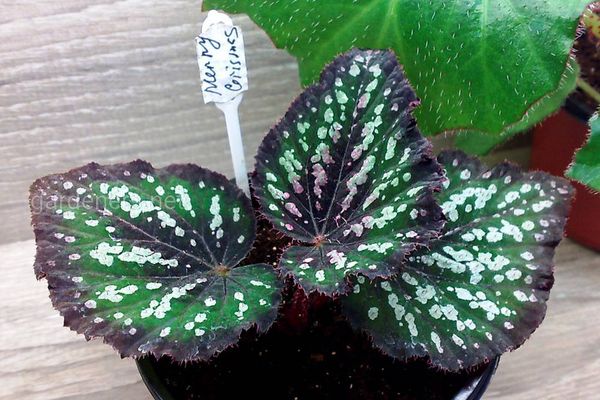
Escargot
A very beautiful compact flower with unusual foliage. The silvery-gray leaves have a clear spiral pattern. The leaves are dull, covered with small villi.
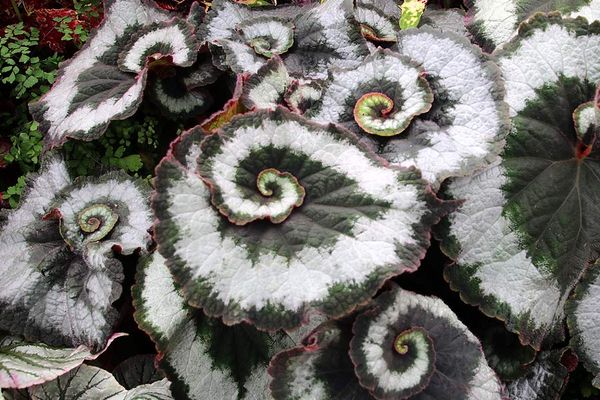
Dollar down
Carved cherry leaves will not leave anyone indifferent. Pointed leaf plates with black edging. This flower will decorate any room without exaggeration.
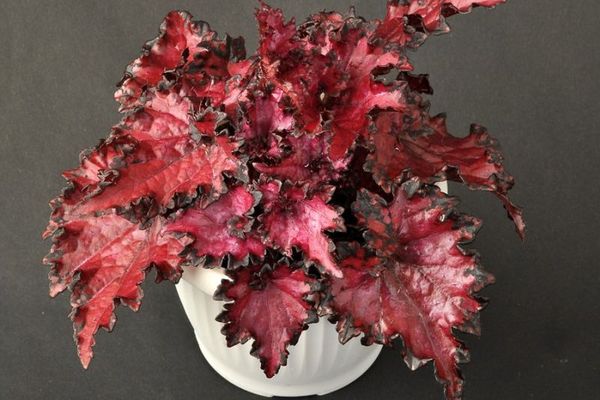
Griffon
Perhaps, among the hybrids, this variety is the largest. The bush can reach almost 40 cm. The color of the leaves is light green with large white areas, a clear shape with pointed tips.

Dark mambo
A very beautiful plant with a unique dark color and small yellow veins. Has an original spiral structure of the leaf. Looks extremely attractive in light interiors.
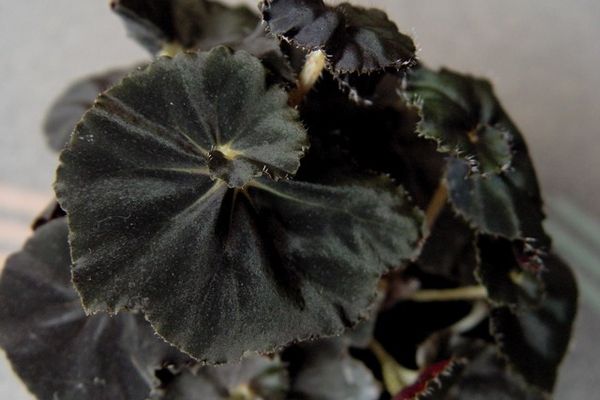
Indian summer
The leaves of the compact plant are large, almost completely hiding the stems under them. Begonia is distinguished by its original color in pink and black tones.
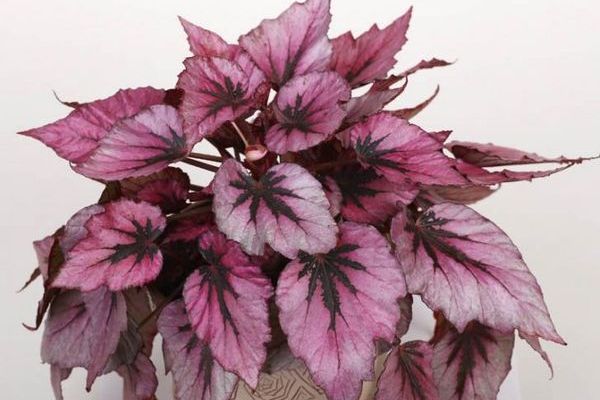
Fireworks
The leaves of this begonia really look like light streaks of fireworks against a dark sky. Their beautiful violet-green pattern and burgundy edging of carved leaves create an extraordinary appearance of the plant.

Beleaf inca flame
A very beautiful variety with uniformly colored leaves without highlighted veins, it is distinguished by a rich red color.
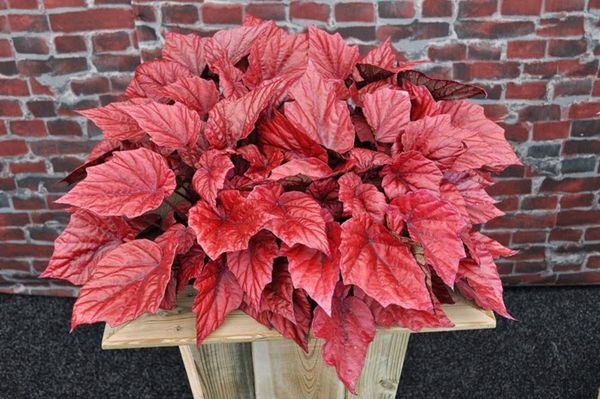
Helen lewis
The foliage of this plant beckons to touch the velvety surface. A very beautiful rich plum-black color is diluted with a silvery-green pattern that repeats the contour of the leaf plate.
This kind of begonias will appeal to all exotic lovers.
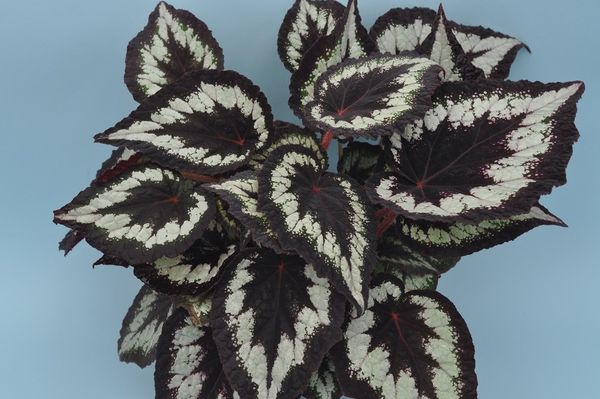
The group of begonias with decorative flowers includes:
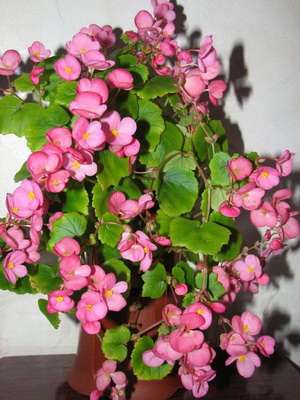

Begonias of the "Lorraine" type, which appeared at the end of the 19th century and under the name "Gloire de Lorraine", have long dominated the market. This variety of begonias blooms in winter with white or pink flowers. Nowadays, it is quite rare in flower shops.
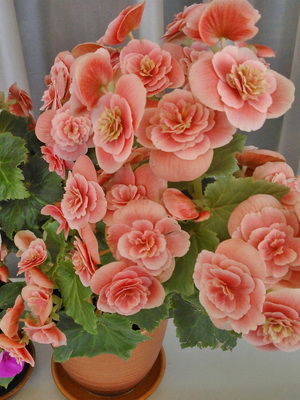
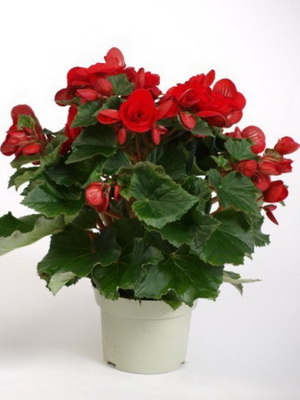
Elatior type begonias bred in England at the beginning of the 20th century from tuberous begonias. They bloom all year round with white, red, pink, yellow flowers. They are generally larger and brighter than the similar flowers of the Lorraine hybrids. In the Elatior group of begonias, the most popular are the Rieger begonias, which are named after the breeder.

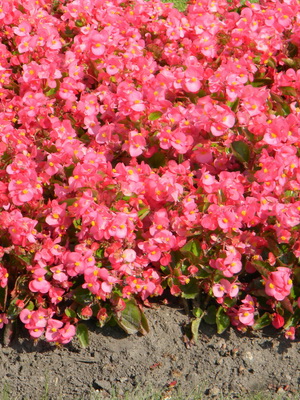
Hybrids of ever-flowering begonia (B. semperflorens) blooming all year round. They tolerate the sun better than the varieties listed above, and mainly grow in gardens and squares, in flower beds and lawns. You can also breed them in pots, especially begonias with decorative flowers.
Tuberous begonias.
Ever-flowering begonia -B. Semperflorens.
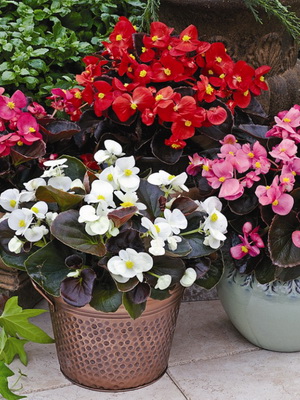

Flower lovers can be offered ever-flowering begonia. Caring for her is almost the same as for the royal begonia and its varieties. The only difference, perhaps, lies in the fact that the temperature of +18 ºС is comfortable for it. Until the beginning of flowering, this kind of begonia needs to be fed monthly with fertilizers, then it will be longer and more luxuriant. The AVA fertilizer is well suited for this. To make the plant look better, the faded flowers must be removed.
Flowering begonias are perennial and annual. Perennials are bush begonias, and annuals are tuberous. Of the perennials, I would like to note begonia, which reaches a height of 80 cm, blooms with red or white flowers, and its leaves with a silvery down. Of the annuals, begonia is especially good, blooming mainly in winter - with red, white or pink flowers. From hybrids, you can opt for begonias with large flowers, simple or double, the color scheme of which can be not only white and pink, but also red, and even yellow.
Wintering begonia -B. X hiemalis.

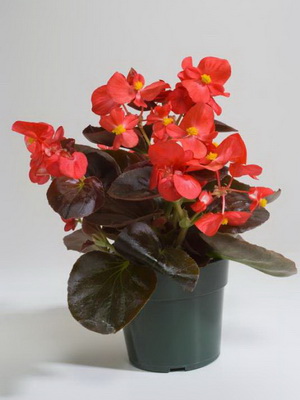
Plants with simple or double flowers in a wide range of shades, mainly red, pink, yellow, orange and white. They evolved from the crossing of B.socotrana and tuberous begonias from South America.
Winter-flowering begonia - B. x cheimantha, or Loren's Begonia - B. Lorraine.
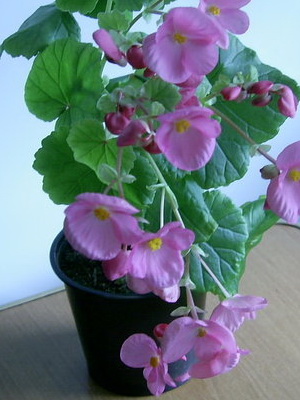
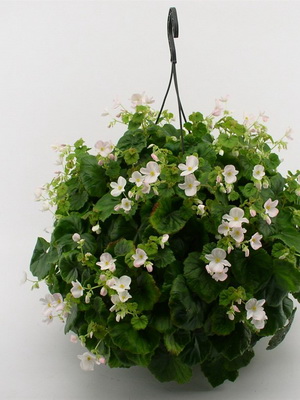
The name of this type of begonias is given for their ability to bloom in winter. The hybrid B. x cheimantha, obtained by crossing B. socotrana and B. dregei, blooms in winter and forms groups of small pink or white flowers. The pink-flowered Gloire de Lorraine is one of the best known varieties.
These photos show varieties of winter-flowering begonias:
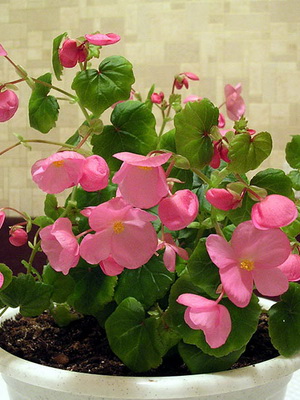
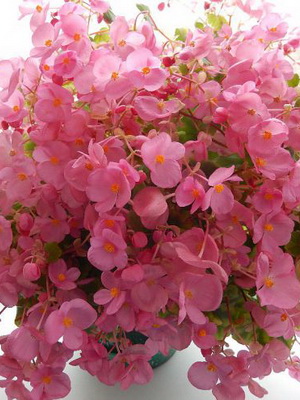
Begonia Sutherland -B. Sutherlandii.


This type of houseplant begonia is an ampelous crop with small lanceolate leaves and an abundance of simple orange flowers in a loose inflorescence in the summer.
Many varieties of begonias are known, including:
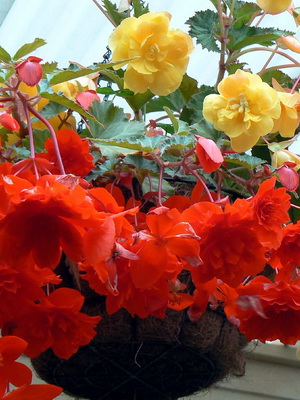
Ampelny B. x t. pendula (Tuberous drooping begonia), with simple and double flowers, used for hanging baskets
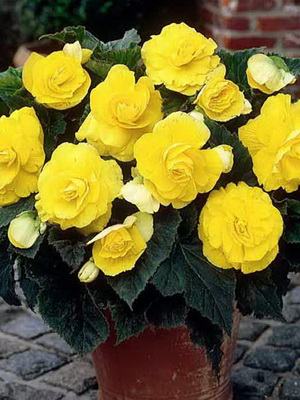
B. x t. multiflora (Tuberous multiflorous begonia) with a mass of simple, semi-double and double flowers
The flowers are red, orange, pink and yellow. They all bloom during the summer months.
Begonia borias. Proper care of luxury Begonia Elatior
Begonias as a species were discovered in the 17th century and gained immense popularity among amateur flower growers.
Elatior, with proper care, blooms all year round, for which they love to give her instead of cut flowers.
The lush cap of the inflorescences will delight their owner for a long time.
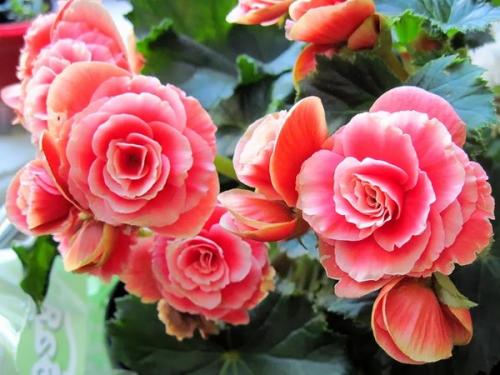
Begonia Elatior is found not only in houses, parks, squares, but also in public places, such as hospitals.
It absorbs harmful chemicals and humidifies the air. It is often used in folk medicine due to its antiallergic and antiseptic properties.
Varieties and varieties
Elatior begonia hybrids are divided into 3 groups: tall - up to 40 cm, medium-sized - up to 30 cm and low-growing plants. The leaves have an asymmetrical shape that resembles the shape of a heart.
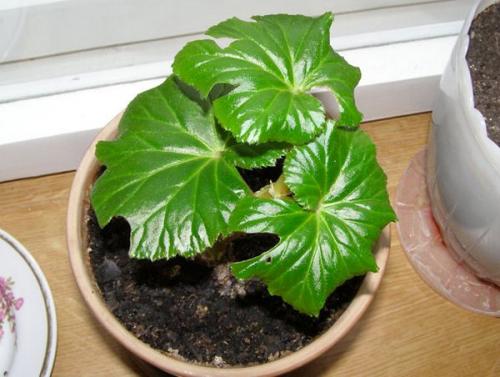
Elatior advantages:
- Various colors of flowers
- Long bloom (even in winter)
Baladin
A beautiful, profusely blooming variety. Shades on the inflorescences of one plant can be varied: from white to pink-red. For this feature, they prefer to give Baladin in pots instead of cut flowers. Medium-sized bush with numerous peduncles.
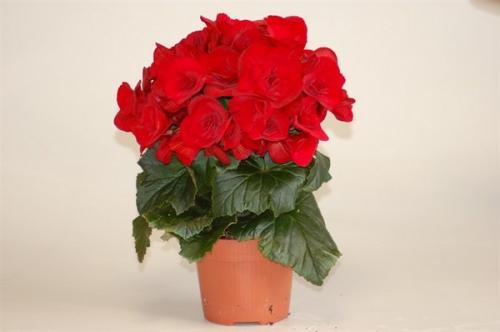
Borias
This hybrid was developed in England in the 18th century. The most common variety on our windowsills. Belongs to the undersized group, has a long flowering period, unpretentious care. The inflorescences have double pink flowers with a white edging.
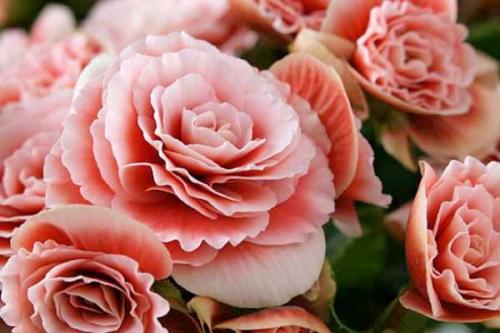
Annabelle
Winter medium-sized variety. The bush is decorated with milky, yellowish terry inflorescences. The flowering period is from November to July. It is grown in the same way in the open field: in gardens, parks and summer cottages.
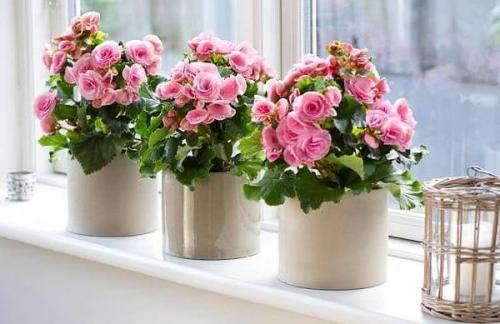
Azotus
A decorative medium-sized course with large pink flowers. Only grown in indoor pots all year round.
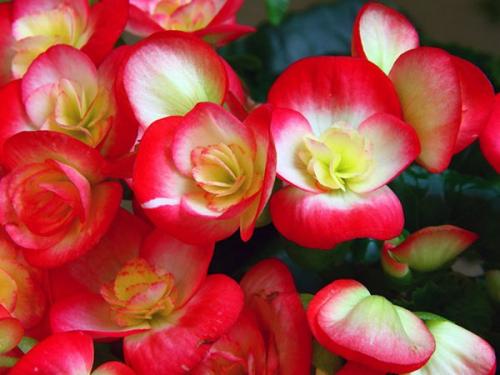
Bellona
The begonia bush grows up to 40 cm, it is not grown outdoors due to the difficulty of care. It blooms with bright red flowers.
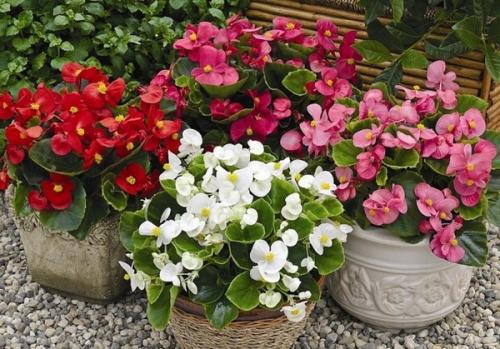
Charisma F1
A stunted species of begonia. Mainly grown indoors. Inflorescence colors from light pink to orange-red buds. It has 4 varieties, which differ in shades of colors.
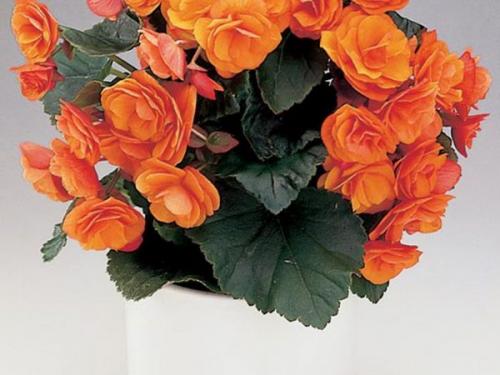
Renaissance
A tall plant, a bush reaches 60 cm. It grows on a windowsill, in the open field it is susceptible to disease. The color of the buds is bright red, the edges of the inflorescences have a wavy edge.
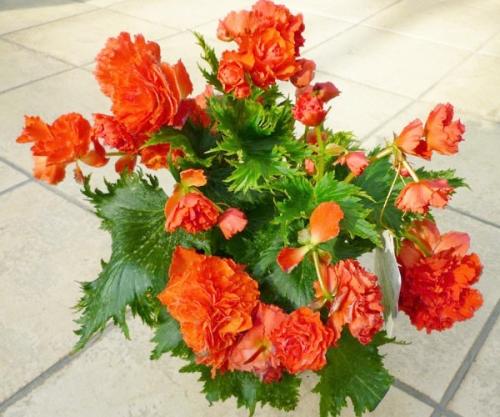
Mix
This is a medium-sized plant. Serrated leaves, flowers are arranged in several tiers. Flowers can be completely different - from red to white.

Begonia Elatior: home care
Elatior begonia can hardly be called an unpretentious plant, it is very susceptible to environmental conditions, does not tolerate stressful situations. The plant requires attention to itself, it is necessary to select the optimal conditions for keeping and watering.
Following a few rules will help grow a healthy flower.
Lighting
In the warm season, elatior is mainly found in the east or west window. In winter - in the south.

Begonias need a lot of sunlight for abundant flowering, but direct sunlight provokes burns, think about shading part of the glass on the window to maintain a presentable appearance in begonias.
Attention! Burns appear on the leaves from direct sunlight. In the shade, begonia fades and stops blooming
The lack of light, like its excess, affects the size of the inflorescences: the flowers become smaller, and there are fewer petals in the double flowers
In the shade, begonia fades and stops blooming. The lack of light, like its excess, affects the size of the inflorescences: the flowers become smaller, and there are fewer petals in the double flowers.
Fertilization
Do you love homemade begonia flowers? How to care for (we show you the photo), every owner wants to know. Let's start with a suitable soil. For planting begonias, it is better to use potting mixes. They can add coniferous, leafy soil, sand, charcoal. But no matter how rich the composition of the soil, over time it is necessary to apply fertilizers
It is very important to feed the plant correctly.
The beauty of this tropical plant is demonstrated by photos of a begonia flower. How to care for him, we continue to consider in detail. The plant desperately needs proper feeding. Fertilizing it, you add useful trace elements, vitamins, amino acids to the soil. They promote the growth and development of bushes, as well as flowering.
Don't know how to care for indoor begonia? Feed her every 10-14 days. Consider the following factors when fertilizing a flower:
- Top dressing will be absorbed much better if you create proper lighting and a suitable temperature regime in the room.
- Fertilize in the evening.
- Moisten the soil well before starting feeding (2-3 hours before the procedure).
- Make sure that there is no contact of the fertilizer with the flower.
- Do not overdo it! Excess feeding leads to flower toxicosis, and then to death.
We continue to consider how to properly care for begonia. The plant especially needs phosphorus and potassium. To give him these elements, buy the special Begonia product. It contains all the micro and macro elements necessary for the health and growth of bushes. The flower will be protected from the negative effects of the environment by the preparation Bona Forte for violets and begonias. This product has a broad-acting formula. It will enrich the soil with nitrogen, humic acids, phosphorus and other useful components.
You can buy Good Power fertilizer at any flower shop in your city. In addition to vitamins for the healthy growth of begonia, the preparation contains succinic acid. It is considered a regulator of plant development. This tool is inexpensive, but effective. Good power also promotes flowering and protects against various diseases. Sometimes you need to feed begonia with ammonium nitrate. If you make every effort to your desire, good mood, then the flower will delight you with its healthy appearance and gorgeous buds.
Begonia Gloire de Lorrain reproduction. Begonia Gloire de Lauren
Begonia Gloire de Lauren is one of the few plants that can please us with winter flowering. In addition, this begonia is extremely unpretentious, which makes it different from many of its closest relatives. The place for begonias (especially during the flowering period) should be light, but shaded from direct sunlight. In direct sun (especially in summer), the leaves fade, dry brown spots may appear on them - traces of burns
With a lack of light, the shoots stretch out, and the flowers become pale. It is very important to ensure a uniform temperature (about + 18-20 degrees), regardless of the season. For a short time, begonia can tolerate temperatures of + 12-14 degrees, however, it must be remembered that lower temperatures threaten the plant with death
In too cool rooms, fungi can grow on begonias. The temperature above +30 degrees is not useful to her either. Do not place Gloire de Lauren near heating radiators. Unlike tuberous begonias, this one is not so demanding on fresh air. Nevertheless, regular ventilation without strong drafts will strengthen her health. Cold drafts can cause flowers to fall off. The plant consumes a lot of water. The substrate must be constantly kept moist. However, before the next watering, the top layer of the earth should dry out. Over-watering with poor drainage can lead to stem rot. Begonia has a fibrous root system with thin, numerous roots. Therefore, it needs a light, permeable earthen mixture, a weakly acidic (pH 5-6.2) reaction. Good options include leafy soil, peat, and coarse sand (2: 2: 1). Purchased soil is also suitable, in which it is desirable to add 1/4 of the sand. A dense, heavy substrate containing a large amount of clay is completely unsuitable. This is a fast-growing plant. Nevertheless, the need for nutrients is relatively low. When feeding (no more than twice a month), it is advisable to use liquid mineral fertilizers in approximately half (from those recommended on the package) doses. Propagate? Easily! During the year, begonia grows and needs to be updated. It reproduces well with stem and leaf cuttings. Apical cuttings are best cut from an adult plant in March. For rooting, they can be immediately planted in containers with a diameter of 5 cm in an earthen mixture of peat and sand, taken in equal parts. Since the cuttings are very susceptible to fungal diseases, it is necessary to disinfect the dishes and substrate in advance. Air humidity can be maintained by building an impromptu mini-greenhouse with a plastic bag. Containers with cuttings should be exposed to bright, diffused light. After the roots have wrapped around the entire earthen ball, young begonias must be transferred to slightly larger pots. As the plants grow, they make the second, and, if necessary, the third transshipment. Propagated by leafy cuttings should be in the second half of December (you can continue until February). It is better to plant a leaf with a petiole (up to 2 cm long) in a distribution box to a depth of 1 cm so that the leaf blades lie on the surface of the substrate (sand and peat, taken in equal parts). The cuttings should not touch each other. At a temperature of + 20-22 degrees, rooting occurs at 3-4 weeks
Watering must be done very carefully, trying not to get on the leaves, because
with an excess of moisture and insufficient cleanliness of operations, causative agents of putrefaction rapidly develop. Leaf cuttings are transplanted only after the shoots have grown in a container with a diameter of 7 cm with a soil mixture suitable for adult plants. The tops of the shoots are pinched 2-3 times. If the last pinching is carried out in the second half of August, then flowering will begin in January. If in October, the plant will bloom in February. To form a beautiful ampelous plant with long shoots, pruning should be stopped in July. Begonia is a short day plant. By reducing its daylight hours to 12 hours a day, you can make the Gloire de Lauren bloom not in winter, but in summer.

